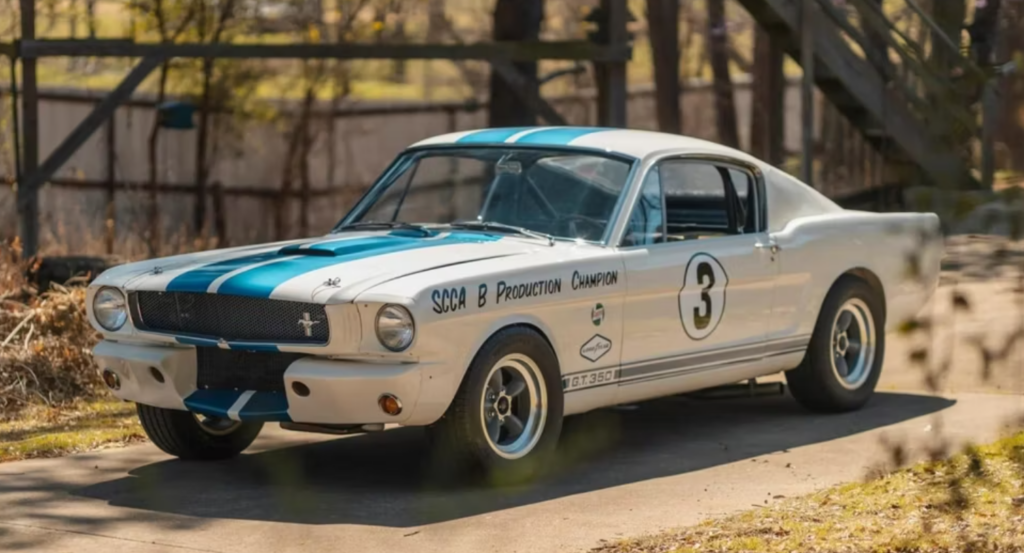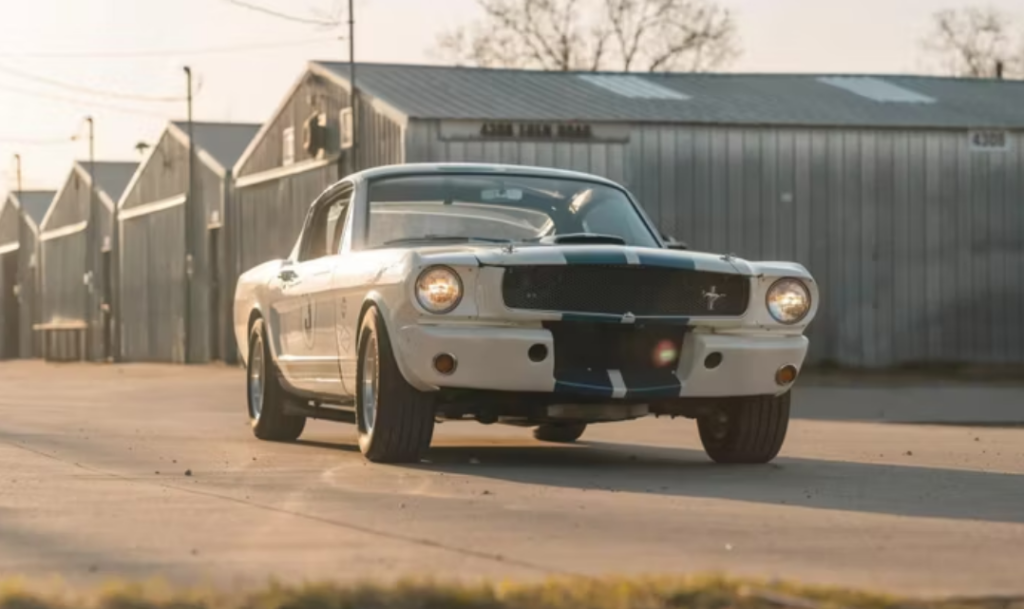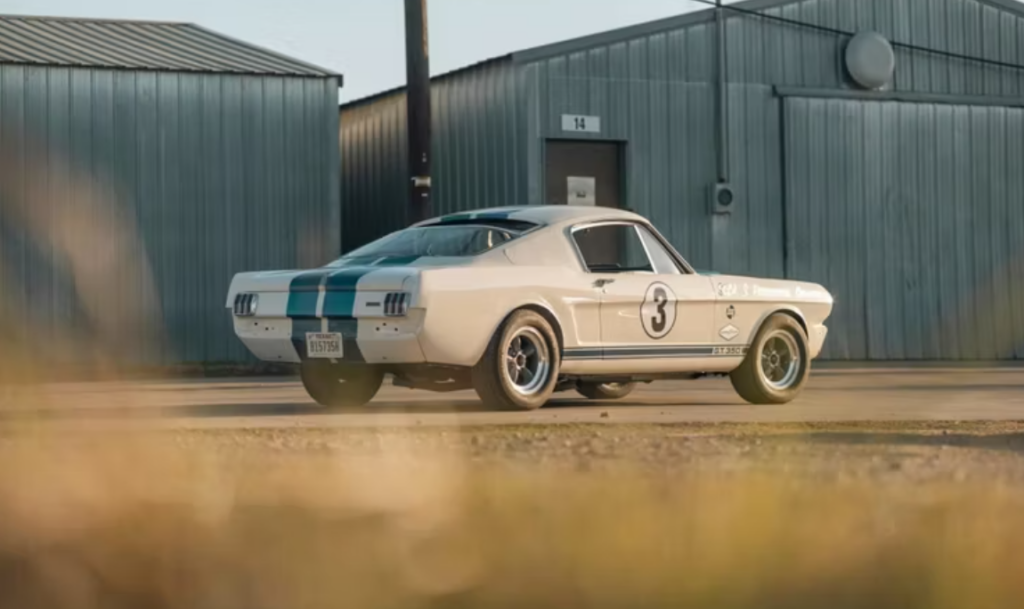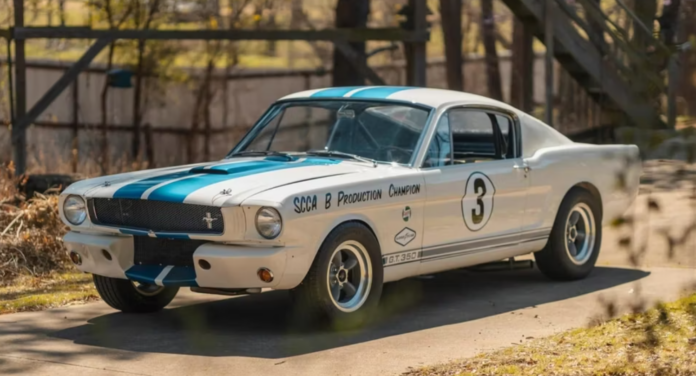At the hands of Shelby American, the mundane Mustang swiftly became a racing thoroughbred that spawned a legend.

The original Shelby GT350R was something of an extreme oddity when it was first unleashed in 1965. Despite is inherent nature as an American, V8-powered coupe, this racing variant seemed to possess more in common with sports cars than the muscle cars of the era in which it had been conceived. Of course, the entire story began with the introduction of the Ford Mustang in mid-1964, but if you’re here reading, then you’re likely well aware of that story by this point.
However, once the Mustang was running wild and the dust finally settled, it was obviously apparent that the Falcon-based pony car could use some serious improvements in order for it to be taken seriously on a racetrack. Carroll Shelby himself even called the Ford Mustang a “secretary’s car”, as the seasoned racer was well aware that substantial changes would need to be made to fulfill Ford’s request of sending the Mustang into the SCCA’s Production Class Division. The end product resulted in one of the most renowned, American racing cars of all time.
Why Carroll Shelby Was The Man For The Job

After Ford first launched the Mustang, they soon discovered that their new model was an absolute hit and far more popular than they’d originally envisioned. Although it was released in the middle of 1964, the Blue Oval still managed to sell 121,538 cars for that model year alone, followed by a staggering 559,500 units in 1965. Mechanically speaking, these early Mustangs were virtually identical to the Falcons in which they’d been based upon. This re-purposing of an already-existing platform had certainly saved Ford a substantial amount of funds when compared to the costs of developing an entirely new model, however, the Mustang was consequently lacking in the horsepower department. Not that these cars were necessarily slow, but were nonetheless finding themselves outdone by a fresh wave of powerful competition that emerged in the form of the Pontiac GTO, Dodge Charger, and countless others as the muscle car wave consequently began sweeping over the entire United States.
During this time, Shelby American’s Cobra was briskly making a name for itself on racetracks across the globe, utilizing FoMoCo power to fulfill its task of blatantly challenging some of the best sports cars that Europe had to offer. Their new Cobra Daytona coupes were swiftly proving to be some of the best cars that the world had ever seen, and would later go onward to win the FIA’s 1965 World Sportscar Championship, besting the likes of Ferrari and Porsche in the process. As Shelby’s engine supplier, Ford took notice of these developments and had sought out Carroll Shelby to improve the Mustang into a much more performance-oriented variant, with the goal of dominating the SCCA’s B/Production class of sports cars. The end result of would see a machine far more capable and athletic than virtually anything else that the Big Three had to offer in 1965.
How The 1965 Shelby GT350R Transformed The Mustang Into A True Performance Car
While Carroll Shelby himself had been busy toiling with the Cobra Daytona and his team’s exploits in Europe, the development of the resulting GT350R was then tasked to engineers Ken Miles and Chuck Cantwell, who quickly set about the necessary preparations to turn the mundane, Falcon-based Mustang into an athletic, racing car. To start, Ford delivered a series of specially-ordered Mustang fastbacks to Shelby American’s facilities in Los Angeles. These cars, finished in Wimbledon White, came to Shelby in a stripped-down configuration, lacking interior upholstery, headliners, insulation, heaters, defrosters, and even windows for the side and rear. Under their hoods, the Mustangs were equipped with K-Code 289ci V8s, rated at 271bhp from the factory, but would ultimately receive a complete transformation. Through the implementation of a high-rise intake manifold, a Holley four-barrel carb, and Tri-Y headers, Miles and Cantwell soon got the output up to over 350bhp and 350 lb-ft of torque. That power was then sent to the wheels via a Borg-Warner T-10M four-speed, although further steps would need to be taken for the GT350R to properly handle itself on the racetrack.
To whoa itself down, Shelby had replaced the Mustang’s rear, drum brakes with larger units from the Ford Galaxie. Up front, Kelsey-Hayes disc brakes would be delivering most of the car’s stopping power. For handling improvements, the pickup points of the front suspension had been reworked while traction bars had been installed to further keep the cars planted on the asphalt. On the inside, a four-point roll cage was fitted, although the rest was left barren and lacking in terms of creature comforts, in order to save as much weight as humanly possible. Further adding to this philosophy was the usage of plexiglass windows for the side and rear of the car, as every last bit helped to get the Mustang on a serious diet. A distinctive, fiberglass front clip was hooked up in place of a traditional bumper, while fender flares were slapped on to better house the larger wheels which Shelby had intended for the track. By the end of development, the first GT350R, chassis 5R002, weighed in at a healthy 2,550lbs. This new, trimmed down stallion was then setting 0-60 mph times of 5.5 seconds and sprinting the quarter mile in just 13.6 seconds. Not bad for a little 289ci-powered Ford, especially considering that these figures are actually a lot better than some of the big-block muscle cars that would follow in the years following the GT350R’s release.
The Legacy Of The 1965 Shelby GT350R

The very first Shelby GT350R soon entered its first SCCA race in Texas, with Ken Miles at the wheel. Miles won, sending the car airborne at several stages, which resulted in the Shelby being nicknamed, “The Flying Mustang”. Further success soon followed, resulting in the GT350R securing the SCCA’s B-Production championship for 1965, which would be the first of three championships in a three-year period.
To homologate the GT350R for competition, a total of 36 cars were built, making them insanely rare and extremely valuable today. In 2020, the first Shelby GT350R prototype, chassis 5R002, was auctioned off for a mind-numbing $3.85 million, making it the most valuable Ford Mustang in the entire world.
Sources: Shelby American, Ford, Mecum, Mustang Specs
